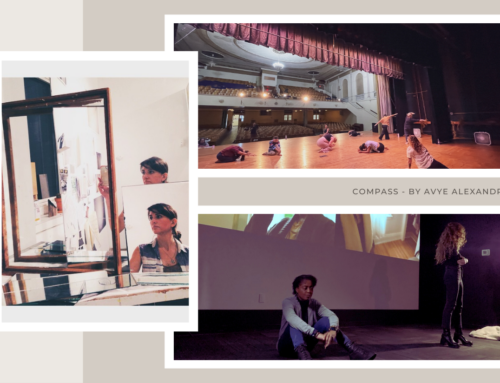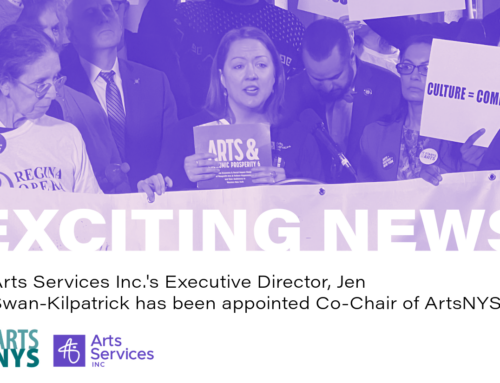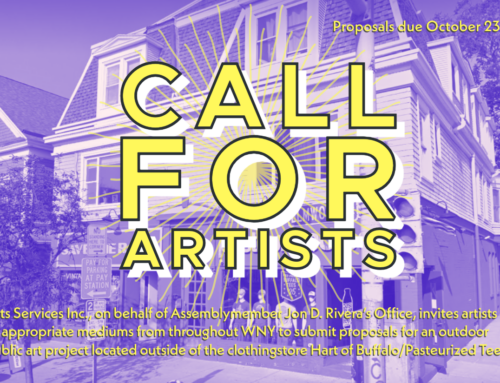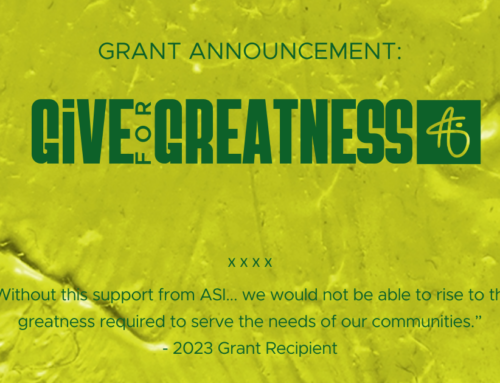Grantee Spotlight: Buffalo Youth Media Institute
Looking back on 1988 and the first year of ASI’s Global Warming Art Project
It’s 2019: All communications, media channels, and consumer products are controlled by one corporate behemoth, and reality is comprised of nothing more than a nonstop stream of television programming. Fortunately for the world as we know it, a group of courageous young activists decide to break through the noise and fight back.
Or at least that’s the premise of 1988, the dystopian short film produced by the young filmmakers and media artists of the Buffalo Youth Media Institute (BYMI), an afterschool program for Buffalo Public and Charter High School students administered by Squeaky Wheel Film & Media Art Center and the Buffalo Center for Arts & Technology. With more than 20 minutes of top-quality satirical skits and sobering interviews, 1988 places the BYMI students among the young people around the world who are organizing to tackle the complicated and urgent crisis of global climate change.
“I realized while working on the film that not a lot of people care about global warming,” said Zaire Goodman, a freshman digital film major at Villa Maria College and longtime student of BYMI. “Some won’t even acknowledge that it’s a thing. It’s not okay.”
The film was supported by the Global Warming Art Project, a granting program funded by Ben Perrone and administered by ASI that awards between $1,000 and $10,000 to Western New York artists and arts organizations whose work addresses the rising dangers of climate change. BYMI was one of six recipients to receive funding during the program’s pilot year, joining local artists Dorothea Braemer, Chantal Calato, Timothy Fredrichs, Judith Goldman, and Anna Scime.
“The program speaks to our ever-evolving commitment to finding the resources needed to support Western New York’s thriving creative community,” said ASI Executive Director Jen Swan-Kilpatrick.
In this case, the resources came from local artists Ben Perrone and Hugh Levick who had been raising money for an art project that ultimately could not be realized due to the challenge of locating a suitable space for installation. Perrone and Levick raised approximately $70,000 in donations for “Environment Maze,” a fund which has been repurposed to create ASI’s Global Warming Art Project Fund.
“Their decision to repurpose the funds is indicative of the way Western New York’s arts and cultural sector functions,” Swan-Kilpatrick said. “We’re an ecosystem; we work together and support one another.”
Mirroring our sector’s spirit of teamwork is Goodman and the young filmmakers and teaching artists of BYMI. He comments that one of his favorite parts of working on 1988 was learning not only about the climate crisis but also about the individual ways every person has a skill or talent to contribute. “It was interesting to see a group of people and figure out who can fill what role and who’s good at what,” he said. And although he contributed his talent for screenwriting and camerawork to the production of 1988, he also enjoyed stepping into a role as mentor to some of the program’s newer students.
 This power of learning together was not exclusive to BYMI’s students. “I was learning about the climate crisis right along with them,” said Jesse Deganis Librera, the lead teaching artist at Squeaky Wheel who oversaw the production of 1988. “To fulfill the teacher’s role, I had to know what I was talking about, so I ended doing a lot of research into the science behind the climate crisis. It was a real learning experience for me.”
This power of learning together was not exclusive to BYMI’s students. “I was learning about the climate crisis right along with them,” said Jesse Deganis Librera, the lead teaching artist at Squeaky Wheel who oversaw the production of 1988. “To fulfill the teacher’s role, I had to know what I was talking about, so I ended doing a lot of research into the science behind the climate crisis. It was a real learning experience for me.”
BYMI is entering its fifteenth year. During its six-week intensive summer course out of which 1988 came, BYMI students creatively explore different social and cultural issues and exhibit their final work at the Burchfield Penney Art Center. “This program is important because we get to come in and express ourselves and talk about topics that people often don’t care enough about,” Goodman said.
Looking forward, Goodman wants 1988 to expose more people to the urgency of the climate crisis, and hopes everyone knows that, as in the production of the film, everyone has a skill to contribute. “I hope that our film makes more people want to help out in whatever way they can,” he said.






